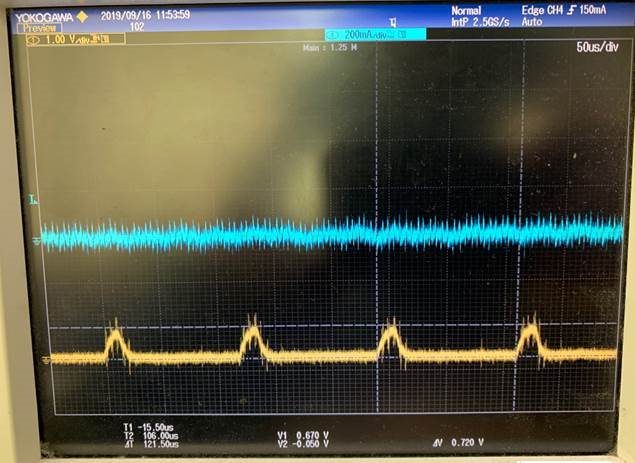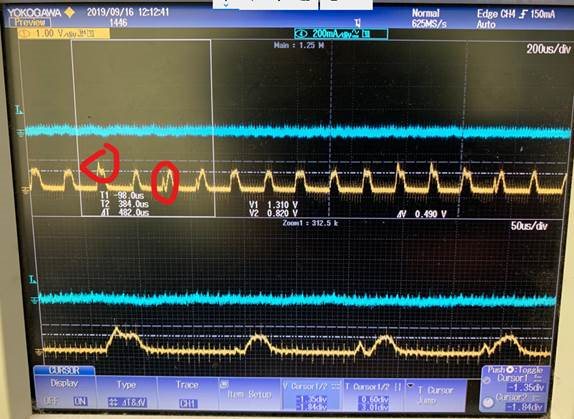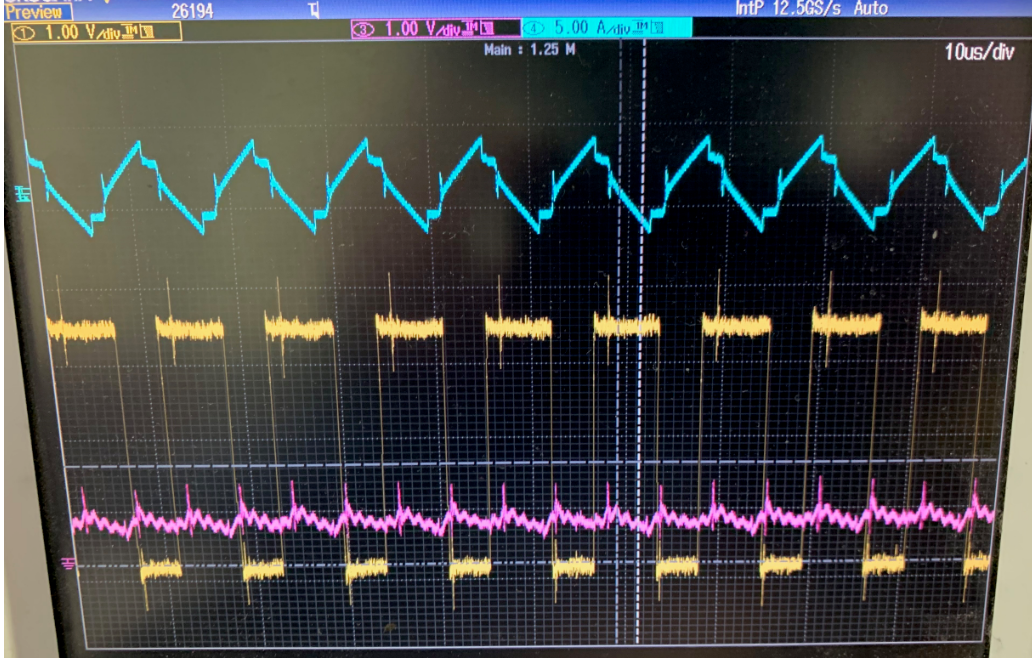Other Parts Discussed in Thread: INA199, TINA-TI
Hi guys
Our customer is using our INA190 as output current sense.
Common mode voltage: 12Vout; Load Current: 0-50A.(DC output) Shunt resistor: 3* 0.3m ohm parallel;
Blue: Iout AC COUPLE; Yellow: INA190A3 OUT. 5A Iout
10A Iout
15A Iout. You can see the red circle phonomenon. Oscillation problem;
50A Iout;Oscillation problem
Schematic:
After that: we also asked customer to change R425 and R428 to 0 ohm. Remove the Offset_ADJ. But the results keep same.
However, when we replace it by INA199B3. The test result is OK. Please see the waveform:
Pink INA199B3 OUTPUT
I found that INA199 has no the first stage but INA190 has one. why we have the first tage int the INA190? is this any relationship between both?
INA199 Block:
INA190:
Your feedback are very appreciated.
Thanks
-Pengfei










